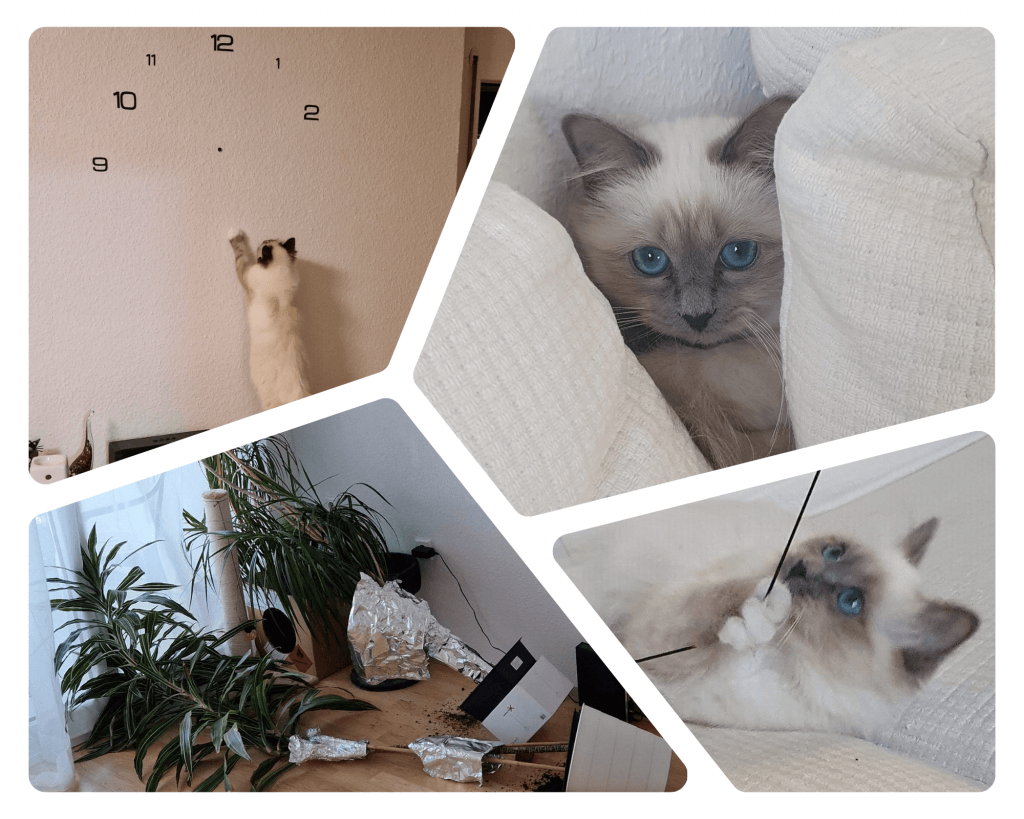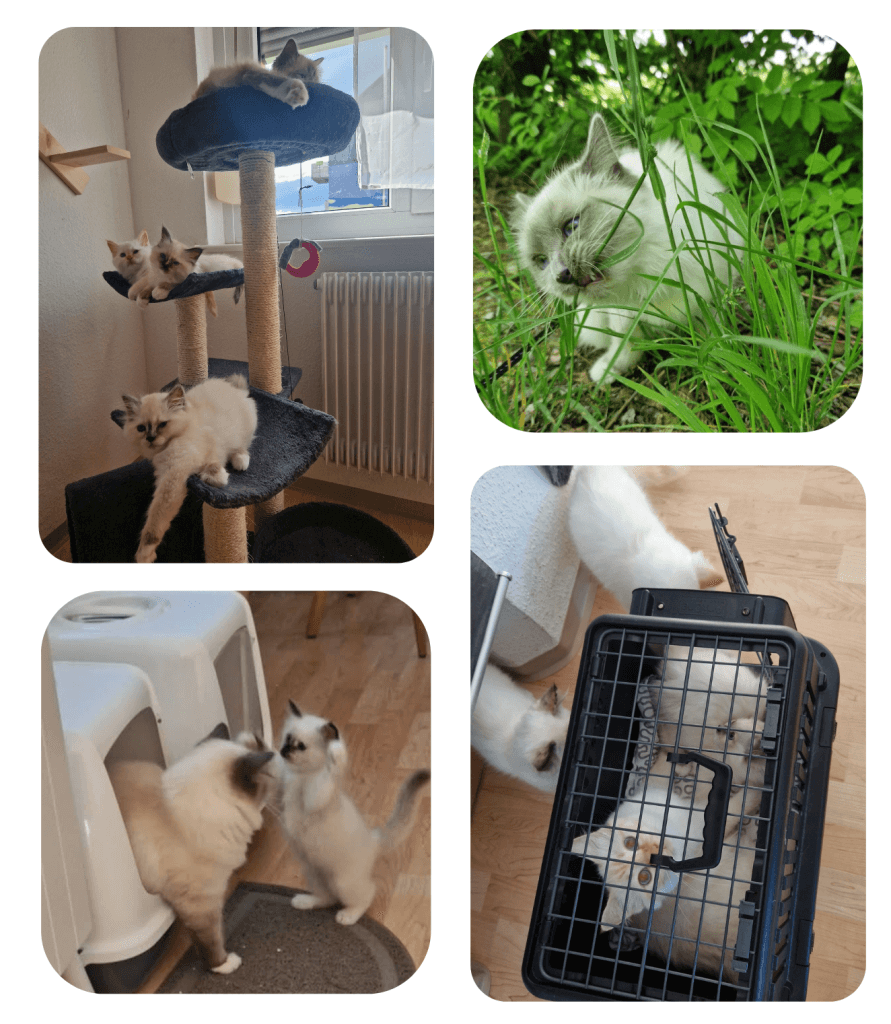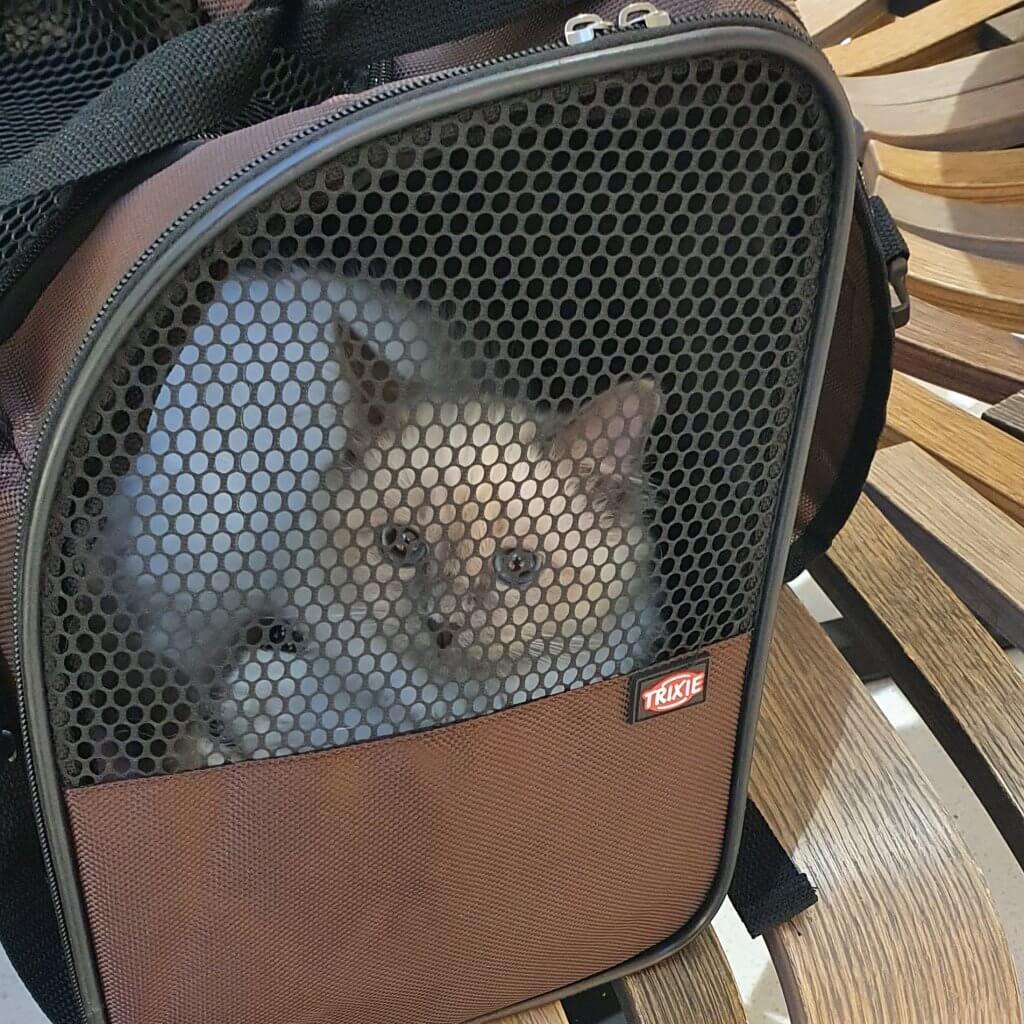Preparations
Bringing home a new kitten is exciting. To make sure that the excitement turns into happiness and not into a disaster, it is important to prepare for the arrival of the kitten.
Kittens are reckless and silly, they can hurt themselves easily. You can try to teach them certain rules later but not in the first days. You need to make sure, they can’t have access to anything that could be dangerous for them. You also need to make sure they have the necessary equipment to feel comfortable and, you also need to make sure to offer enough space to play and use the energy they have, otherwise they might just demolish your flat out of boredom.
BASIC TO DO LIST:
- Make your home safe
- Get basic equipment
- Buy food and litter

Safe home
Possible hazards for a kitten
- Electric cables to chew
- Toxic plants to taste (or climb)
- Gaps behind furniture where they can get stuck
- Windows to fall out. Tilt windows to get hung on
- Sharp objects to cause injury
- Tiny objects that can be swallowed
Kittens show endless creativity in finding suicidal activities. Even if you do your best to prevent silly accidents, they will find a way to bring you closer to a heart attack 😀
“Look at that yummy electric cable!”
“Cats are time consuming – they say. I don’t know what they mean. I just took some time between 3 and 8… Including that ticking toy in the middle”
“Let’s just try to squeeze into that comfy gap in the sofa!”
“My human wrapped the houseplants in tin foil, so I can’t taste or climb them. Huhh, really?!”

Non-toxic houseplants
These are a few examples of household plants that are non-toxic to cats. Please make sure to identify the plants properly. Some of them have similar nicknames. E.g. Money plant: The harmless Peperomioides is called sometimes money plant, but also the toxic Jade plant is called money plant.
- Cat grass (Cyperus alternifolius Zumula)
- Wheat grass
- Spider Plant (Chlorophytum)
- African Violet (Saintpaulia)
- Chinese Money Plant (Pilea peperomioides)
- Banana Tree (Musa spp.)
- Areca Palm (Dypsis lutescens)
- Boston Fern (Nephrolepis)
- Calathea (Calathea spp.)
- Orchid (Orchidaceae)
- Bromeliad, Orange star (Bromeliaceae)
- Ponytail Palm (Beaucarnea recurvata)
- Marigold (Calendula officinalis)
Toxic plants
A few examples of the most common houseplants that are toxic to cats. The list is not complete! Please check each of your plants on websites like: ASPCA.org
- Aloe Vera
- Cutleaf Philodendron (Monstera Deliciosa)
- Java fig, small-leaved rubber plant (Ficus benjamina)
- Peace Lily (Spathiphyllum)
- Pothos, Devil’s ivy (Epipremnum aureum)
- Jade Plants (Crassula)
- Snake Plant (Sansevieria trifasciata)
- Dieffenbachia, Dumbcane (Dieffenbachia amoena)
- Kalanchoe (Kalanchoe blossfeldiana)
- Lily of the Valley (Convallaria majalis)
- Hyacinth (Hyacinthus orientalis)
- Oleander (Nerium oleander)
- Tulip (Tulipa spp.)
- Daffodils (Narcissus spp.)
- Chrysanthemum (Chrysanthemum morifolium)
- Poinsettia (Euphorbia pulcherrima)
- Azalea (Ericaceae)
- Dracaena, Dragon tree (Dracaena)
- Garlic, onion, parsley, tomato plant and green tomato
Basic equipment
Your kitten needs to feel comfy in your home. It needs a place to sleep and hide, some climbing opportunity, entertaining toys and clean, hygienic food bowls. Cats love scratching. It is not only for sharpening their claws and stretching their legs but also for leaving their scent around. The more scratching posts you place in several places around the flat, the less reason your cat will have to scratch your sofa.
If you have more cats, always have at least as many cat toilet as many cats you have. Ideally you’d have 1 more toilet in addition. This way you can prevent them to spoil your flat due to not-clean-enough toilet complaints.
If your cat has long fur, you need to help them eliminating the swallowed hair. Cat grass helps them throwing up hairballs, malt paste helps to push it through the intestines. You can also find cat food dedicated to hairball reduction.
Shopping list
- Transport box. It should be large enough for an adult cat to stand up and being able to lay comfortably
- Bed or cat cave to sleep in. Cat tree is recommended
- Scratching posts (several) to climb and to scratch. It is advised to have several scratching posts around the flat. Unless you are happy offering your sofa for the same purpose
- Food and water bowls. Stainless steel is recommended for easy desinfectioning
- Litter tray and scoop. It is advised to have cat number + 1 number of litter boxes. (3 boxes for 2 cats)
- Toys
- Brush, flee comb, nail clipper
- Shampoo. Even if you don’t plan to bathe your cat, it is good to have shampoo if the cat jumps into dirt (or into your food)
- Cat grass or malt paste to help eliminating swallowed hair

Cat food and litter
Litter & litter box
If you have the right cat toilet and litter, you can significantly reduce unpleasant odors in your home and keep the floor clean from cat litter crumbs carried around on the paws.
There 2 main types of litter boxes:
- open toilet (no cover)
- hooded toilet (covered)
Some cats prefer open toilets, some cats like hiding when doing business. Hooded toilets keep the odors inside the box which is better for the freshness of your flat but it needs to be cleaned regularly as cats don’t like using a smelly toilet (who does).
There are also hooded toilets with a drawer for easier cleaning or hop-in toilets that are open on the top. The benefit of the top entrance is that the cats need to jump on the top of the toilet in order to exit and the litter stuck on their paws falls back to the box through the holes on the top. Also, if you have dogs that like snacking on end products, can’t access the inside. If you invest in automatic litter robots you can even save the daily scooping.
Cats are not too fuzzy: they mainly care about having clean toilets.
Finding the right cat litter can be challanging as well. There are sooo so many brands available on the market. How to decide which cat litter to choose?
Clink on the link to read more about different types of cat litters.
Cat food
High-quality food has a high meat and protein content. Cereals are only present in very small quantities in the cat’s natural diet, and so cats have a very low tolerance to cereals and carbohydrates. They cannot digest them. Only small amounts of vegetable components should therefore be found in cat food to ensure that the kidneys are not overloaded.
To read more about recommended cat food, please follow this link.


